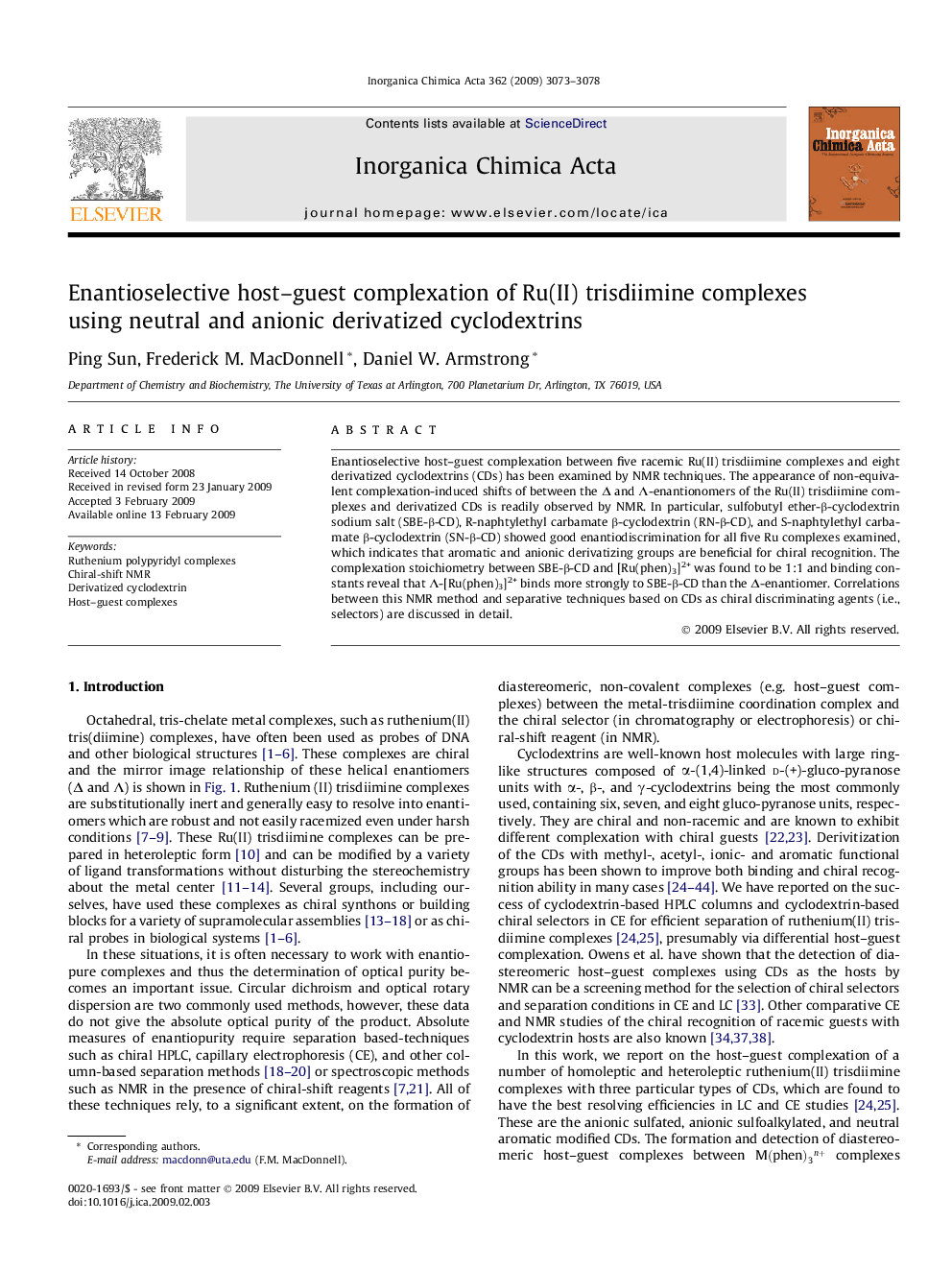| Article ID | Journal | Published Year | Pages | File Type |
|---|---|---|---|---|
| 1308481 | Inorganica Chimica Acta | 2009 | 6 Pages |
Enantioselective host–guest complexation between five racemic Ru(II) trisdiimine complexes and eight derivatized cyclodextrins (CDs) has been examined by NMR techniques. The appearance of non-equivalent complexation-induced shifts of between the Δ and Λ-enantionomers of the Ru(II) trisdiimine complexes and derivatized CDs is readily observed by NMR. In particular, sulfobutyl ether-β-cyclodextrin sodium salt (SBE-β-CD), R-naphtylethyl carbamate β-cyclodextrin (RN-β-CD), and S-naphtylethyl carbamate β-cyclodextrin (SN-β-CD) showed good enantiodiscrimination for all five Ru complexes examined, which indicates that aromatic and anionic derivatizing groups are beneficial for chiral recognition. The complexation stoichiometry between SBE-β-CD and [Ru(phen)3]2+ was found to be 1:1 and binding constants reveal that Λ-[Ru(phen)3]2+ binds more strongly to SBE-β-CD than the Δ-enantiomer. Correlations between this NMR method and separative techniques based on CDs as chiral discriminating agents (i.e., selectors) are discussed in detail.
Graphical abstractCyclodextrins (CDs) derivitized with anionic and neutral aromatic functional groups (R) show differential binding to Δ and Λ-Ru(II) trisdiimine complexes as determined by 1H NMR. Formation of diastereomeric host–guest complexes leads to complexation-induced chemical shift differences in the NMR and correlates with the separation data obtained from HPLC and CE using CD-based chiral selectors.Figure optionsDownload full-size imageDownload as PowerPoint slide
